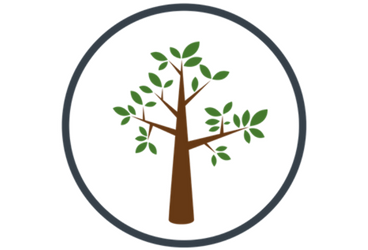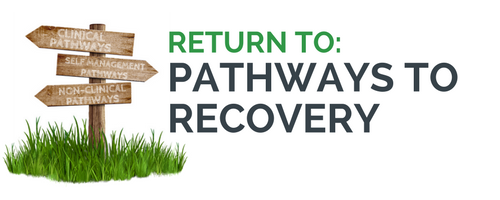
Holistic-Based Recovery Services
Holistic medicine, also referred to as integrative health, is a form of healing that integrates conventional and alternative therapies to treat the entirety of the patient.
Instead of treating substance use in isolation, holistic medicine considers overall physical, mental, spiritual, and emotional well-being to promote optimal health.
Therapies in this category tend to lack empirical evidence (in many cases due to absence of research), but are increasing in popularity. Many holistic therapies are now widely available as part of many traditional substance use disorder treatment programs.
In addition to more conventional therapies, holistic medicine may include:
ALTERNATIVE THERAPIES
- Acupuncture
-
A form of traditional Chinese medicine during which a practitioner uses hair-thin needles to stimulate specific points on the body. This practice is believed to promote the body’s own healing system and restore its proper function.
Some research suggests that acupuncture may help alleviate acute and chronic pain, such as low-back and neck pain, and reduce the frequency of tension and migraine headaches; however, some studies have shown acupuncture to be no more effective than a placebo intervention. One of the issues with deciphering these mixed results is that the majority of acupuncture studies have been small, and the placebo interventions have varied widely, making comparisons between studies difficult.
It is also possible that acupuncture may be more effective for some patients than others, but more research is needed to determine this.
- Aromatherapy
-
Often offered as a complementary treatment in combination with other interventions, aromatherapy, also referred to as essential oil therapy, is a method of inhaling or applying to the skin naturally-extracted aromatic essences from plants (flowers, herbs, or trees), seeking to balance, harmonize, and promote the healing and health of the mind, body, and spirit through scent.
Some studies suggest that certain essential oils have antibacterial, antiviral, anti-fungal, calming, or energizing effects. More research is needed to identify the effectiveness and mechanisms (aromatherapy may work by sending chemical messages to the areas of the brain that affect mood and emotions, but more research is needed to determine this).
- Guided Imagery
-
Guided imagery, also known as visualization or mental imagery, is a technique that focuses and directs the imagination in combination with breathing exercises to elicit the body’s natural relaxation response, characterized by slower breathing, lower blood pressure, and feelings of increased well-being.
Considered a relaxation technique, guided imagery works to generate mental images that stimulate sensory perception (e.g., sights, sounds, tastes, smells, movements, and images).
A report published by the National Institutes of Health suggests that guided imagery, a mind-body intervention technique, is one of the most popular alternative medicine modalities used for maintaining health and well-being.
Research has suggested that relaxation techniques can help reduce anxiety associated with illnesses or medical procedures, insomnia, labor pain, chemotherapy-induced nausea, temporomandibular joint dysfunction, and may also help to manage chronic pain and migraines. Relaxation techniques have been studied for other conditions, but evidence is limited or inconsistent.
- Hypnosis
-
Hypnosis, also known as hypnotherapy, is the induction of a deeply-relaxed state of consciousness, characterized by focused attention and concentration with increased suggestibility and suspension of critical faculties in an effort to remove barriers to psychological insight. While in a state of hypnotic trance, patients are offered therapeutic suggestions to encourage behavior change or relief of symptoms.
Since the 1950s, 12,000 articles have been published on hypnosis, but evidence for the effectiveness of hypnosis remains mixed. However, there is general agreement that hypnosis can potentially be a beneficial complementary treatment in combination with other treatments for some conditions such as phobias, addictions, and chronic pain.
- Massage Therapy
-
Massage therapy is a variety of techniques where therapists press, rub, and otherwise manipulate the muscles and other soft tissues of the body using their hands and fingers, forearms, elbows, or feet.
Research suggests that massage may help with back pain and may improve quality of life for people with depression, anxiety, cancer, and HIV/AIDS.
- Meditation and Mindfulness
-
Meditation is the technique for resting the mind and attaining a state of non-judgmental consciousness and mindfulness of thoughts, feelings, and sensations.
While meditation practices will vary, four common elements are:
- A quiet location with limited distractions
- An intentional posture (e.g., sitting, lying down, walking, or other positions)
- A focus of attention (e.g., specially chosen word or set of words, an object, or sensations of the breath)
- A non-judgmental attitude (e.g., allowing thoughts and distractions to arise without judging them or self)
Research has suggested that meditation can alleviate pain, reduce high blood pressure, decrease symptoms of anxiety, depression, and insomnia, and has been useful for smoking cessation.
- Reiki
-
Reiki is a complementary health approach where practitioners place their hands lightly on or just above a person, with the goal of facilitating the person’s own healing response. Reiki is based on an Eastern belief that energy supports the body’s innate or natural healing abilities.
Current research on Reiki suggest inconclusive results of effectiveness. Overall, little high-quality research has been conducted.
- Reflexology
-
Reflexology is the practice of applying different amounts of pressure to specific points on the feet or hands, using thumb, finger, and hand techniques. Reflexology is based on a belief that there are specific zones and reflex areas in the feet and hands that correspond to all body parts.
Current research on reflexology is minimal and suggests limited effectiveness.
- Yoga Instruction
-
Yoga is a mind and body practice that combines physical postures, breathing techniques, and meditation or relaxation.
Based on data from the National Health Interview Survey 2012, 14.3% of U.S. adults used yoga in the previous year, up from 9.5% in 2013, 6.1% in 2007, and 5.1% in 2002.
Research suggests that a carefully adapted set of yoga poses may reduce low-back pain, improve physical function, improve quality of life, reduce stress, lower heart rate and blood pressure, relieve anxiety, depression, and insomnia, and improve overall physical fitness, strength, and flexibility.
CREATIVE THERAPIES
- Art Therapy
-
Art therapy is a form of psychotherapy involving the encouragement of free self-expression through painting, drawing, or modeling, used as a remedial activity to express emotion, or as an aid to diagnosis.
Research on art therapy is limited.
- Music Therapy
-
Music therapy is the use of music interventions to accomplish individualized goals within a therapeutic relationship by a credentialed professional who has completed an approved music therapy program.
Music is used to address physical, emotional, cognitive, and social needs of the individual through creating, singing, moving to, and/or listening to music.
Research on music therapy is limited, but suggests that music therapy may improve social and behavioral skills in children with autism spectrum disorder (ASD).
- Dance and Movement Therapy
-
Dance therapy, also known as movement therapy, is the psychotherapeutic use of movement to increase emotional, cognitive, physical, and social integration. Dance therapy is a form of expressive therapy that varies in movement style, from traditional dances to more subtle movements such as stretching.
Research on dance and movement therapy is limited, but exercise is known to improve quality of life, reduce stress, lower heart rate and blood pressure, relieve anxiety, depression, and insomnia, and improve overall physical fitness, strength, and flexibility.
- Drama Therapy
-
Drama therapy is a form of expressive therapy to facilitate change and promote mental health through the use of theater techniques. This practice is believed to promote self-disclosure, storytelling, goal-setting, problem solving, expression of feelings, or catharsis.
Research on drama therapy is limited.
ANIMAL-ASSISTED THERAPIES
- Equine Therapy
-
Equine therapy, also known as horse therapy, equine-assisted therapy, or equine-assisted psychotherapy, is a form of experiential therapy that involves interactions between patients and horses.
While research on equine therapy is limited, preliminary research suggests that equine therapy may improve symptoms of anxiety and post-traumatic stress disorder and other measures of physical health. In one study of equine-assisted therapy, participation increased participant time in addiction treatment and overall completion of treatment. Animal-assisted therapy has been found to reduce pain, anxiety, depression, and fatigue in patients.
- Canine Therapy
-
Canine therapy is a form of experiential therapy that involves interactions between patients and dogs. In canine therapy, a handler typically oversees patients petting the dog and answers questions related to the dog.
While research on canine therapy is limited, preliminary research suggests that stroking an animal can lower blood pressure and trigger the release of endorphins: the body’s natural mood-enhancing chemicals. Animal-assisted therapy has been found to reduce pain, anxiety, depression, and fatigue in patients.
SPECIALIZED THERAPIES
- Wilderness Therapy
-
Wilderness therapy, also known as adventure therapy or outdoor experimental therapy, is the use of experimental education, individual therapy, and group therapy in a wilderness setting to treat patients with a variety of conditions. There is large variation in types and quality of wilderness therapy programs, but many programs do offer evidence-based clinical treatment approaches administered by trained clinicians within remote natural settings. The majority of wilderness therapy programs revolve around a hiking and camping program in an effort to achieve behavioral and attitudinal changes.
The majority of wilderness therapy programs are private pay (e.g., not paid for by insurance) and some states have minimal regulatory oversight of these programs. Most wilderness therapy patients are adolescents or young adults, and high school aged clients are often referred to therapeutic boarding schools after (generally) 2-3 month stays in the wilderness program.
Research on wilderness therapy is limited, and research that does exist is mixed. The basis for wilderness therapy often relies on research that supports the efficacy of exercise, being in the natural environment, and other evidence-based interventions such as cognitive behavioral therapy approaches.


